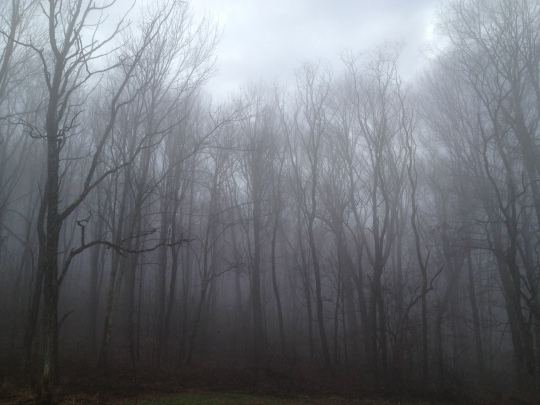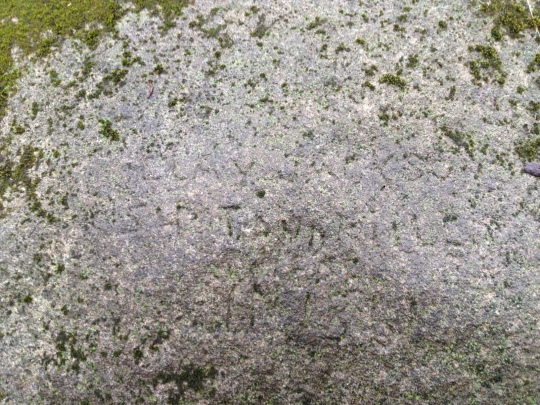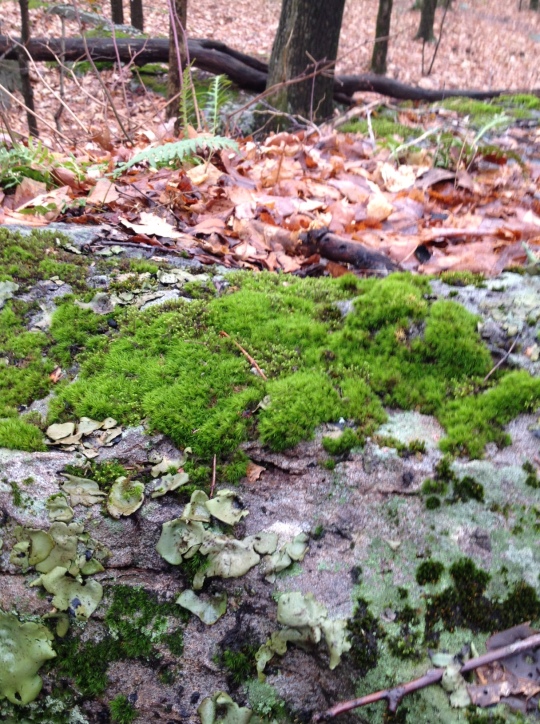The Battle of Rich Mountain

We were in the middle of a cloud up on Rich Mountain. The mist had a softening, dreamy quality. Taken with my cell phone camera.
A series of battles took place in what is now West Virginia during the summer of 1861. Most of them were decisive victories for the Federals, including the encounter which took place at Rich Mountain.
We were out “far afield-ing,” as my kids like to call our wandering drives to see new sights and cover unfamiliar terrain. It was a rainy, cloudy Friday, perfect weather for a long drive.
I popped “The Story of the World” into the CD-player, and we set out, meandering through Northern Virginia until we found scenic, old route 55 and crossed the border into West Virginia.

This monstrosity is a great example of why we like to take the ‘old’ road down below rather than the ‘new’ one up there.
A potty break turned into a spontaneous caving expedition, giving the kids a chance to get muddy and wet exploring crags and crannies in the limestone cliffs.
When it was almost time to start home, I spied a little brown sign advertising the battlefield at Rich Mountain, just outside Beverly, WV. Who knew? We turned off the main road and went to investigate.
Soon, the road turned from asphalt to the sticky, muddy dirt of a mountain road on a wet day. The road twisted for miles, and I began to wonder how the armies could have possibly dragged artillery way up there. And on period roads! We wound our way up into the hills, passing hunters, dogs, and a quarry before we rounded a corner and pulled up in a pass.
Thick, heavy clouds laid their tired weight around us as I gingerly turned the van around in the little used and very soft dirt parking area. “The last thing we need is to be stuck in the mud way up here,” I thought. It seemed a remote place for a farm, let alone a battle.
Some investigation revealed a wooded battlefield in the coll between two peaks at the site of what was, in 1851, a farm belonging to the grandson of a signer of the Declaration of Independence. Hart, was the family name. Apparently, the Confederates had about 200 men and a single piece of artillery (ah-hah! It WAS too much trouble to get any more up there!) stationed in what must have seemed like an unconquerable location.
The farmhouse and stable around which the battle raged on July 11, 1861, are gone now, but the huge boulders and foundation stones are still there, and -amazingly- you can still see the bullet holes and gouges from various forms of weaponry on the rocks! (plus plenty of impact craters in the signs from more modern ammunition…)

You can still see the 150-year-old bullet hole in the rock, just above and right of the grey lichen on the rock.
The Confederates took shelter behind the rocks and the stable when the Federals surprised them from behind, having surreptitiously marched uphill in the pouring rain under the guidance of a young man from the farm.
Today, with the heavy, damp, clinging fog, and soaked ground, it was easy to imagine how uncomfortable it must have been to make a surprise, uphill assault in bad weather!
It had been a Federal victory, the swarming onslaught overcoming the cannon and sending the Confederates fleeing over the mountaintop pastures among the cows. It’s all forest, now.

All those trees the settlers labored to clear have grown back again, including this one that looks like it’s sitting down on the rock to rest.
Every once in a while, a pick up truck would swish by us, its tires kicking up a plume of tacky mud, hunters in bright colors in the cab. One shuddered to a halt, and I heard a rich, southern accent calling out to us.
“Y’all got to look over there on ta-other side of the road, there’s a path thetcha folla, an’ if ya look atta rocks, you kin see some carvings. Some a th’soldiers carved their names intada rocks.”
Cool!
And sure enough, under the moss and lichen in every shade of green (in December!), we saw several carvings. A sign posted by the private organization which maintains the site said alumni from the battle had returned after the war and engraved their names on the rocks which had sheltered them that day.

See the carving? They ask you not to touch it so it won’t fade any faster. It says: “Clay Jackson was killed here in 1861.” According to the signs, he was a Confederate soldier taking shelter behind this rock who died in the very first volley. His friend carved this on a visit after The War.
We make a point to say the St. Gertrude prayer at every battlefield we visit. And a prayer for the healing of our Land.

